Education Program
By thevlm In VLM Through the YearsAugust 15, 2016
Science is hands-on.
This simple but powerful belief is what has driven the Virginia Living Museum’s education program for nearly 30 years. Established in 1987 by Museum Director Bob Sullivan and Education Director Pete Money, the education program continues today to connect learners of all ages with the natural world.
Forming a Foundation
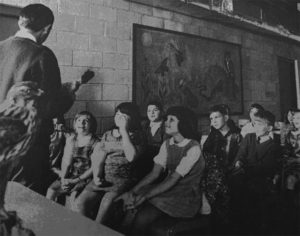

Since its founding in 1966, the Virginia Living Museum has offered education classes and activities for visitors. Here a student group meets in the Junior Nature Museum and Planetarium’s classroom in 1969 for a lecture-demonstration with the Museum’s first executive director, Brad Hawkins.
As the Peninsula Nature and Science Center transitioned to become the Virginia Living Museum in 1987, Bob Sullivan brought on Pete Money to help with the transformation and serve as education director. Both knew that the Museum needed a formalized education program to best serve its growing number of visitors and students.
After touring other living museums throughout the United States, Sullivan and Money envisioned an ambitious education program for the new Museum.
“We borrowed from other living museums to make a hybrid facility,” Money explained. “For the education program, Bob was just great. He gave us freedom and a tremendous range to try new things.”
While other museums at the time incorporated education programs for schools, Money and Sullivan aimed for a more widespread program.
“We were trying to create a comprehensive education program without gaps,” Money said. “A program for everybody.”
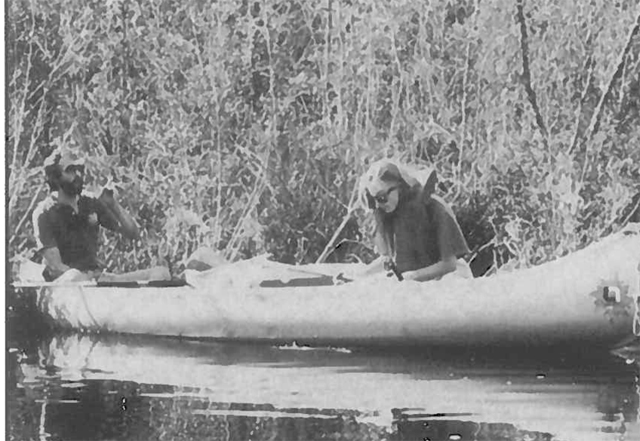

Pete Money and Beth Seha, education assistant, identify plant species as they prepare for a public canoe safari.
With that goal, Money hired a team of experienced educators to develop activities and programs for both students and adults.
Money nearly doubled the number of educators at the Museum to staff the program. “I looked for people who knew their science and had great teaching experience,” Money said. “That’s what made the program special.”
With the educators in place, the Museum signed contracts with the local school systems to offer specialized programs for kindergarteners up to high school seniors. For the general public, the education program developed activities and even trips to engage the local community.
“We wanted to do something in the public arena too, so we had adult education programs,” Money said. “We didn’t want to leave anybody out. This was a big bite to chew.”
Partnering with Schools
Tackling this first bite meant establishing close relationships with regional schools.
Since its inception, the education program at the Virginia Living Museum has worked closely with local schools to provide science education for children of all ages.
“The goal was not to be considered by the schools as a field trip destination but rather an off-site lab and field area that is an integral part of the school,” said Fred Farris, who served with Money as the Museum’s first curator of school education.
Working with their team, Farris and Money secured contracts with the regional public school systems for pre-paid science programming for all grade levels. In its first year, the education program provided 60,000 students with curriculum-enhancing programs through the Newport News, Hampton, York County and Poquoson school systems. To develop a program for high school students, the Museum was awarded a $28,800 grant by the Virginia Environmental Endowment. The Museum matched this grant with an additional $25,560 in order to design a comprehensive program that aligned with each high school grade level.
The education program’s offerings provided schools a unique partnership that gave teachers and students access to experienced science educators who could enhance the curricula taught in schools. Because of these offerings, the Museum was named “Outstanding Mentorship Site of the Year” by the Governor’s School for Science and Technology at new Horizon’s Technical Center in 1988, just one year after the program was formalized.
By 1989, the Museum’s contracts grew to include partnerships with the Gloucester, Mathews and Williamsburg and James City County school systems.
“We established specific grade-level targeted, curriculum-correlated programs so that students could come each year from K- through 12- grades and have a different science program every year,” Farris said.
But the increase in programs inevitably led to an increase in demand.
“The programs and numbers of students impacted grew extremely fast during those years from 20,000 students per year in the mid-80’s to over 125,000 students per year in the mid-1990s,” Farris explained.
More than just a site for field trips, today the Museum continues to offer unique educational opportunities for both students and teachers. In addition to having students visit the Museum, the education program brings the Museum to the schools.
Through the public school systems’ contracts with the Museum, the education program’s educators are able to bring live animals and the Museum’s collections into schools to teach interactive lessons. These classroom programs are grade-level oriented and help make science a hands-on learning experience.
“The Virginia Living Museum’s school programs are conducted in the Museum’s classrooms, lab and planetarium, in the field, and as outreach programs in school classrooms,” explained Chris Lewis, who served at the Museum’s education director until 2014. With multiple options for engagement, the education program helps teachers find the best way to introduce students to the Museum.
Today, the education program continues to support science education through the public school systems. Educators continue to work with both public and private schools to design grade-level targeted science programs that align with students’ curricula and Standards of Learning (SOL) tests. These programs are endorsed by the Virginia Department of Education, U.S. Department of Education and the National Science Foundation.
“The wide range of public programs developed for children make it possible that kids from age 3 through 12 can experience exciting, hands-on programs that are never repeated,” Lewis said.
In the Museum, and Out
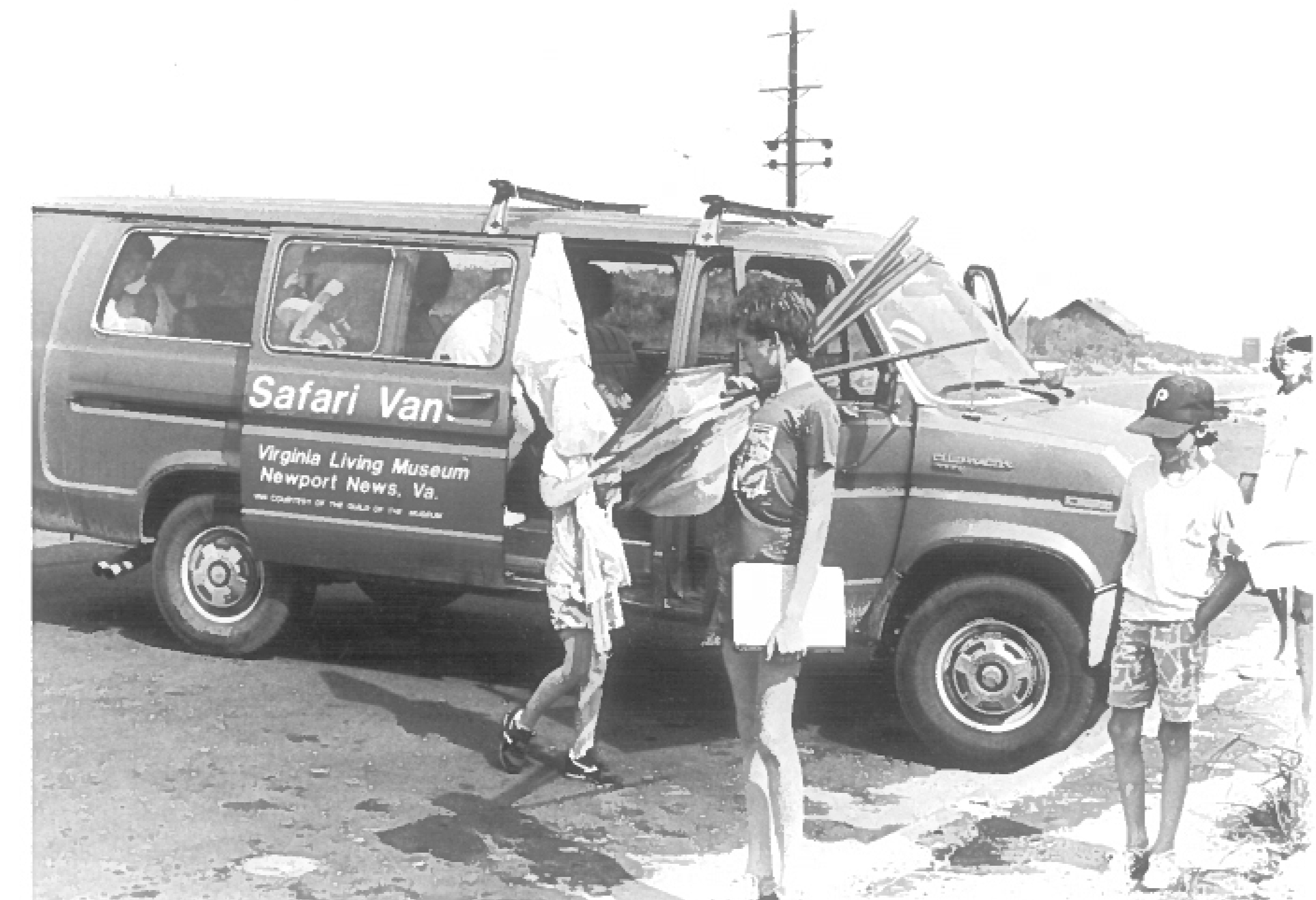

In the 1980s the education program began developing activities for the general public, including safaris for families and adults. These excursions allow local residents to explore the state of Virginia and beyond with Museum educators as their guides. Participants can go canoeing, dig for fossils and even study butterflies with their families.
“We developed and led naturalist excursions every month to wild sites in Virginia and beyond so that adults and families could learn about nature first-hand,” Lewis said. These safaris even included visits to Alaska, Cape Cod and the Amazon rainforest.
“Our mission was to help people develop a greater respect for the natural world, and getting people out there is a great way to do this,” Money said
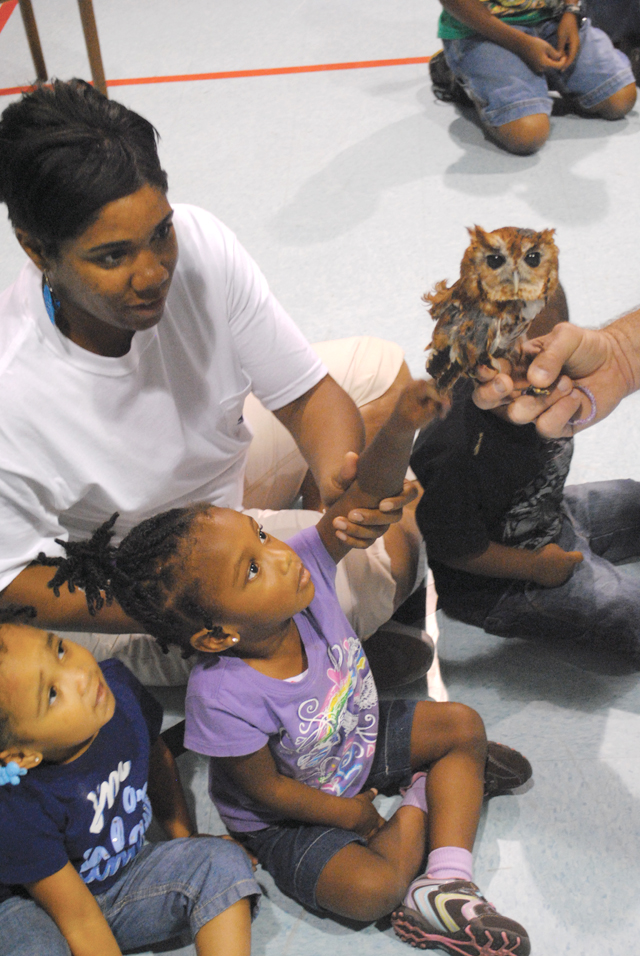

“I truly enjoyed the opportunity to teach all ages from pre-school to Elderhostel,” Lewis explained.
Making Science Hands-On
At root of the Virginia Living Museum’s education program is a commitment to hands-on learning.
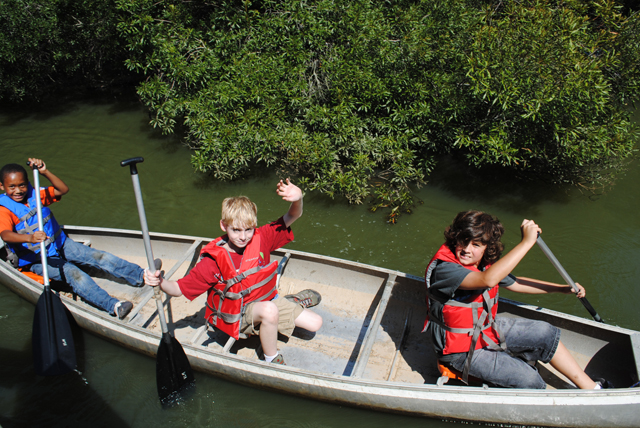

“For people to come to truly care about the natural world and to become a steward of the environment, they must experience nature first hand,” Farris said.
“We wanted to show that science is applied and very real” Money said. He explained that one of the goals of these education programs was to show kids the real-world applications of scientific phenomena. “The natural world ties to everything you do,” he said.
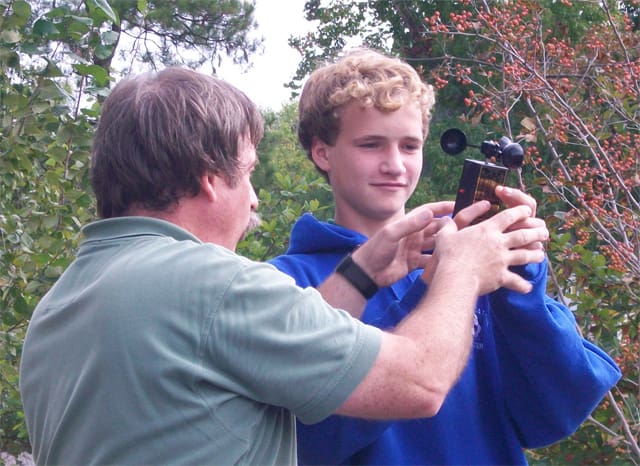

A student from Peninsula Catholic High School tests out meteorology instruments in the Museum’s Weather Studies class.
To test these ties to the natural world, the Museum’s education program relies heavily on using experiments and hands-on demonstrations in their lessons.
“In keeping with our philosophy of making science education experiential, the museum has a made a substantial investment in scientific equipment used in programs,” Lewis explained. “Under the guidance of Museum educators, participants are taught to use scientific equipment as part of the programs. Even the youngest students are encouraged to use age-appropriate instruments.”
But the educators make sure the classes are still hands-on.
“While learning to use technology is very important,” Lewis said, “learning becomes fun, exciting and memorable when coupled with the opportunity to examine real specimens. The Museum incorporates a huge variety of non-live real specimens and live animals that students can actually touch. For example, students studying the paleontology of the Chesapeake Bay area may have the opportunity to physically examine and measure a 7-inch-long giant shark tooth fossil. In a mineralogy lab they determine the specific gravity of a topaz sample. While studying animal survival adaptations students may examine real bird bones and observe up close the anatomical adaptations of a live owl.”
This push for hands-on learning makes every encounter with the education program memorable, especially for children growing up in an urban environment.
“The VLM’s educational programs are critically important for this region where many children grow up in inner-city situations where they rarely have a meaningful encounter with nature,” Farris said. By visiting the Museum or by working with one of its educators, these children experience the natural world despite the limits of city-living.
And the education program’s mission will only become more important as urbanization continues to spread.
“The VLM’s education role for the community will only become more important over the next 50 years as natural areas become more fragmented by urban growth and society’s increasing need for natural resources,” Farris said. “For people to come to truly care about the natural world and to become stewards of the environment, they must experience nature first hand. So in 50 years we will still be sharing live, native animals and plants with visitors and students in engaging science programs both in the Museum’s classrooms and out in the field.”






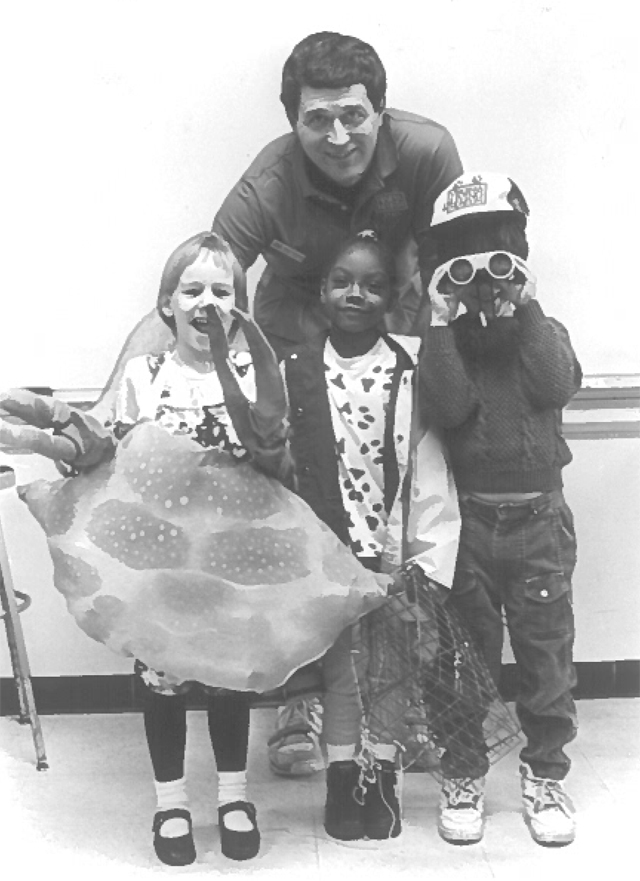
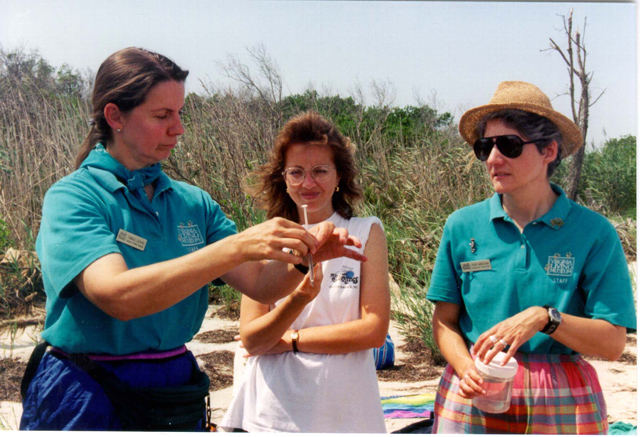

Jennifer K. Carver
Great account of the education philosophy behind the programs and activities at the Virginia Living Museum.
Just wanted to point out that I came aboard on April 1, 1985 as Curator of School Education. I was there a little over
two and a half years and am still proud to have been a part of the initial development of the museum. Fred Farris joined the staff after I left.